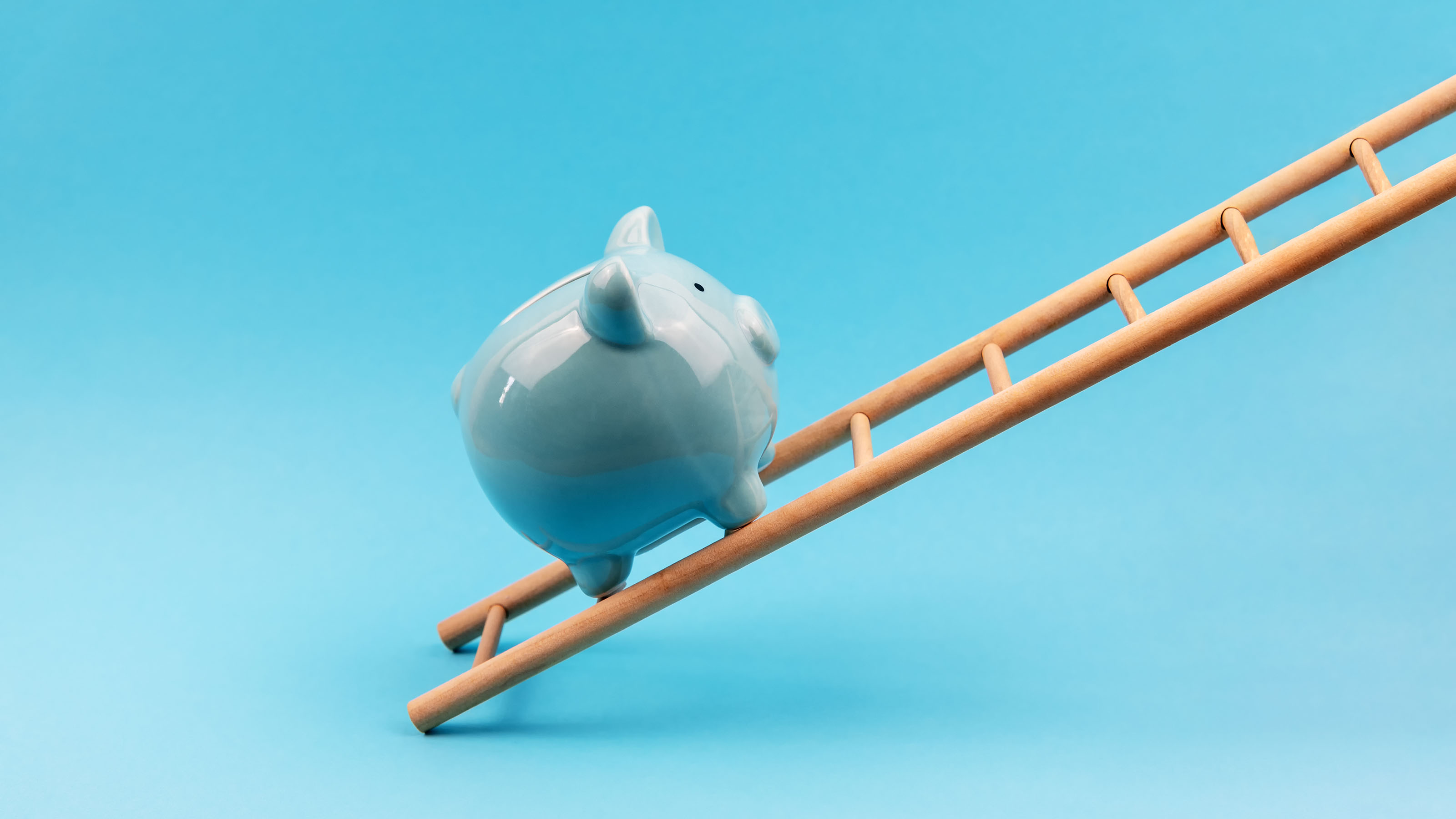
Things might be changing soon for savers. Kiplinger Investing for Income editor Jeffrey Kosnett recently said: "You might be wise to lock in Treasury-bill and CD ladders sooner rather than later."
The reason? Rates on CDs are still high, with many terms earning you over 4%. However, those rates might be coming down in the future if the Fed decides to cut interest rates.
And that's becoming more of a reality. CNBC conducted a survey of economists, fund managers and analysts, and 65% believe a rate cut will happen this year on account of a wobbling economy. This is up from 44% in March, so it's clear a shift is starting to happen.
If a rate cut happens, it means you only have a narrow time to lock in a higher rate of return. Take a look at how a CD ladder allows you achieve long-term financial growth, with the flexibility to pivot investments as you see fit.
How does a CD ladder work?
A CD ladder is a savings strategy where you don't put all of your eggs into one basket. You essentially open multiple CD accounts, but not at the same time.
To demonstrate, say you have $100,000 to devote to savings. You could put it all in a jumbo CD and earn 4.50% with some accounts. But what if you want to diversify?
With a CD ladder, you would instead spread your investments out, like this:
- $20,000 in a one-year CD
- $20,000 in a two-year CD
- $20,000 in a three-year CD
- $20,000 in a four-year CD
- $20,000 in a five-year CD
The goal of this approach is to stagger maturity dates. That way, you have access to some cash if you need it, while also having the flexibility to take everything earned on a CD and reinvest it to continue climbing the ladder.
The other benefit of a ladder is there's not one specific way to do it. You could start with a few CDs to see how you manage and continually add more from there. That also gives you opportunities to see where rates stand in a moment of uncertainty.
Using this Bankrate tool, you can find CDs to start this approach:
What to consider with a CD ladder
A CD ladder requires more maintenance than a normal CD. As you approach one maturity date, you'll have to decide what to do with your cash from there. And the more CDs you have, the more you'll have to do this.
Some banks and credit unions will automatically renew your CDs unless you set a plan with them. Therefore, make sure to set a reminder on your phone a few weeks before the maturity date, as it will give you ample time to research whether to keep your money in one or try another option.
Another thing to keep in mind is inflation. While you can earn a good rate of return on a five-year CD now, we also don't know how the trade wars and other policies will impact inflation moving forward. If inflation does rise enough, it would lower the purchasing power on what you earn with a CD.
On the other hand, if the Fed does cut rates sometime this year, it's vital to start your CD ladder sooner than later to take advantage of the higher rates.
Some of my top CD recommendations
Along with the Bankrate tool, here are a few CD recommendations that can help you build your ladder:
Bank |
CD Type |
APY |
Min. Deposit |
|---|---|---|---|
6-month CD |
4.50% |
$50,000 |
|
1-Year CD |
4.40% |
$5,000 |
|
6-month Jumbo CD |
4.40% |
$50,000 |
|
2-Year CD |
4.28% |
$500 |
|
5-Year CD |
4.25% |
$500 |
|
4-Year CD |
4.20% |
$500 |
|
3-Year CD |
4.00% |
$0 |
Now is an excellent time to start a CD ladder, especially if there might be rate cuts later this year. With a CD ladder, you'll be able to diversify your savings to help you reach your goals.
This approach also gives you a chance to change up CDs as you need to maximize savings. Just remember to set reminders on when each CD matures, as it gives you time to decide where to park your cash next.







